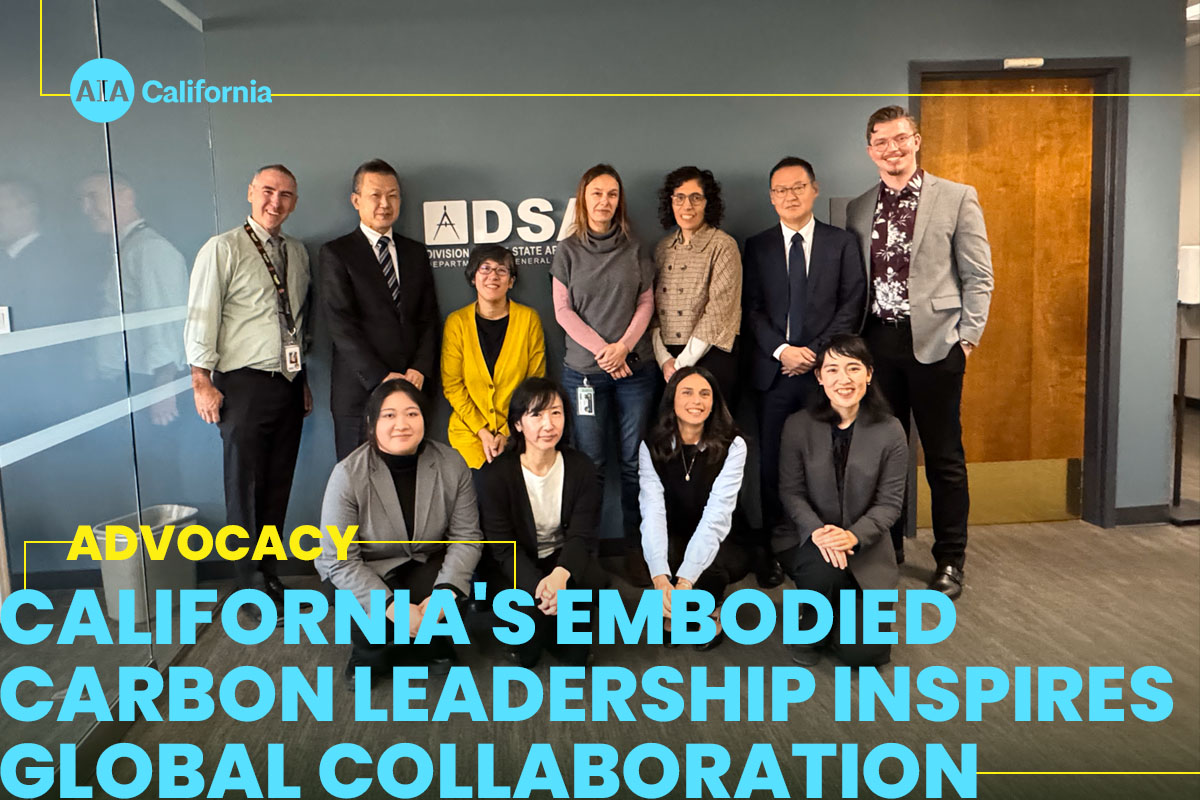
On Thursday, January 9, AIA California participated in a groundbreaking meeting with the Tokyo Metropolitan Government delegation and State of California officials, including the State Architect, to discuss California’s leadership in reducing embodied carbon in the built environment.
California’s first-in-the-nation mandatory embodied carbon measures, now integrated into the building code, which AIA California was instrumental in getting passed, have gained global attention—including from Tokyo’s regional government, eager to learn from our state’s experience.
The Tokyo delegation traveled to California interested in learning about the state’s strategies for developing and implementing embodied carbon ordinances, overcoming enforcement challenges, and achieving ambitious goals for 2030 and beyond.
The cross-continental dialogue underscores the shared commitment to sustainable building practices and the importance of collaboration in addressing the climate crisis.
The Tokyo delegation, who included members of the city’s Climate Change Division, were particularly interested in hearing details on each compliance pathway and if additional resources and training were available from the California Building Standards Commission (CBSC) and the Division of the State Architect (DSA). While state agencies refer professionals to calgreeninfo.com, a valuable resource hub focused on the CALGreen code developed by the California Energy Codes and Standards team, in terms of educating and providing best practices to those within the profession, AIA California was the leading expert in the room.
In meeting with Tokyo, the California Building Standards Commission (CBSC) and the Division of the State Architect (DSA) discussed their agency’s role in code development and implementation for the state. Specifically, their formation of the CALGreen Carbon Reduction Collaborative (CCRC) was identified as a key element and strategy for the adoption of the embodied carbon measures.
AIA California highlighted its position as a member within the CCRC, and how the organization along with other allies proposed the code changes and provided expertise in outlining the compliance pathways of Existing Building Reuse, Environmental Product Declaration (EPD) reporting, and Whole Building Life Cycle Assessment for carbon reporting.
AIA California consultant Mike Malinowski, FAIA, dove into details and reasoning for the compliance pathways including building threshold sizes, other reference policies, and carbon accounting tools. For additional resources and training for practitioners around CALGreen and sustainability, it was advised to the delegation that AIA California stands as major provider for not only helping architects understand CALGreen, but for embodied carbon education and sustainable design resources for design professionals and the industry at large. Additional AIA California resources around CALGreen, embodied carbon, sustainability and Zero Net Carbon Design education was shared with the delegation, and as additional resources are developed will continue to be provided to the city of Tokyo as needed.
Sharing our CALGreen code development story and resources to the city of Tokyo was a powerful representation of supporting climate action around the globe.
Together, we’re shaping a global future that prioritizes sustainability in the built environment.
Key Participants: